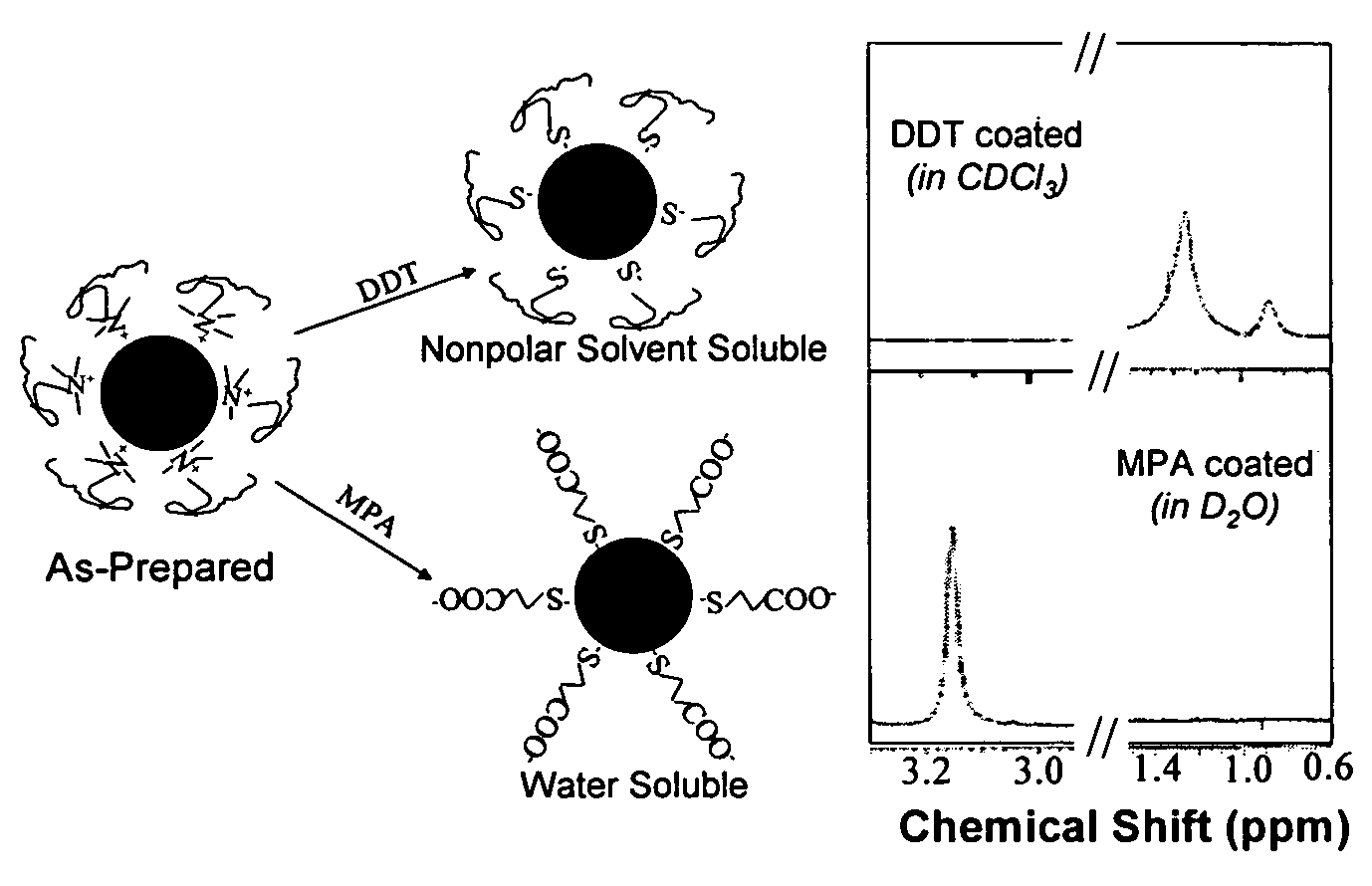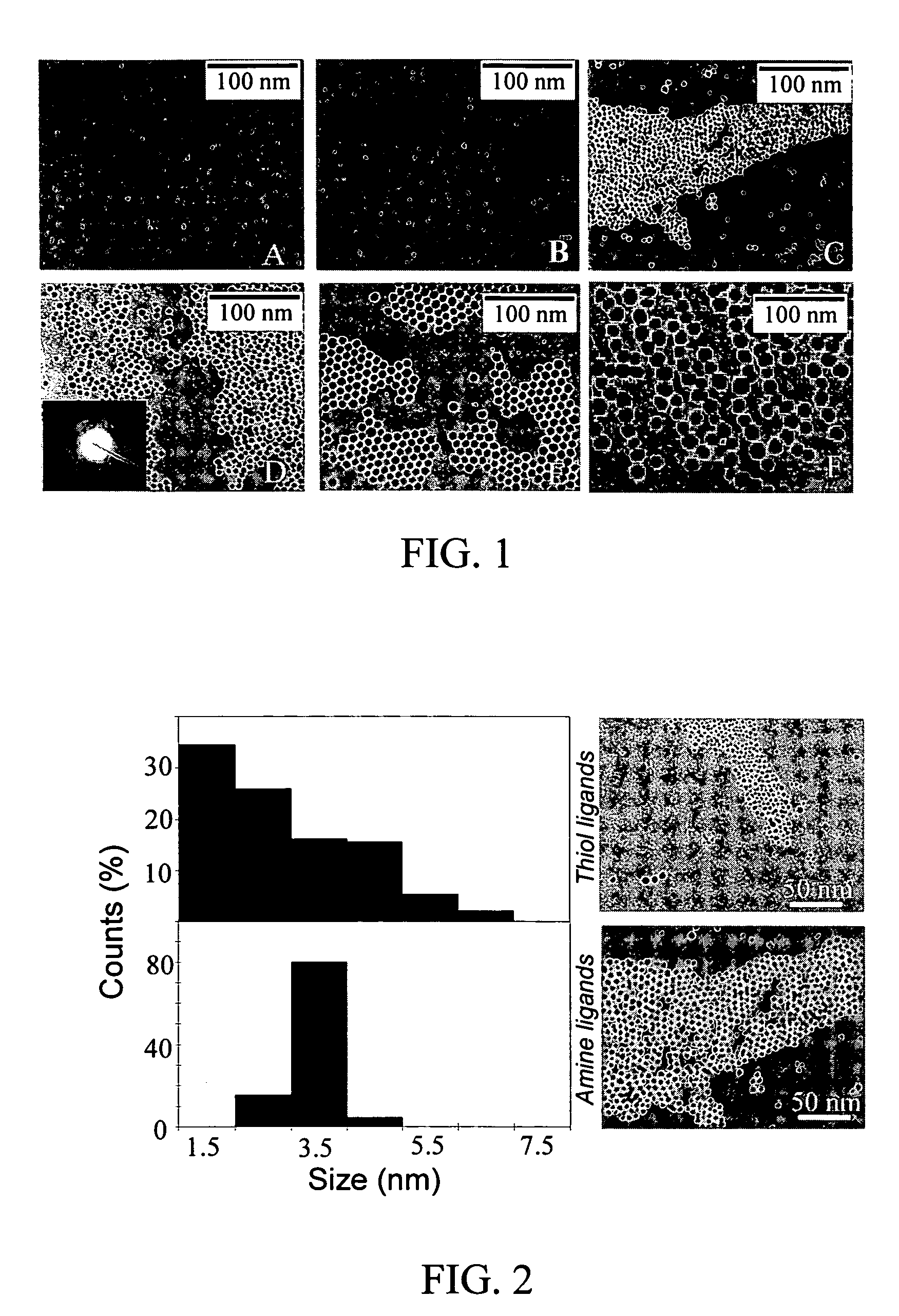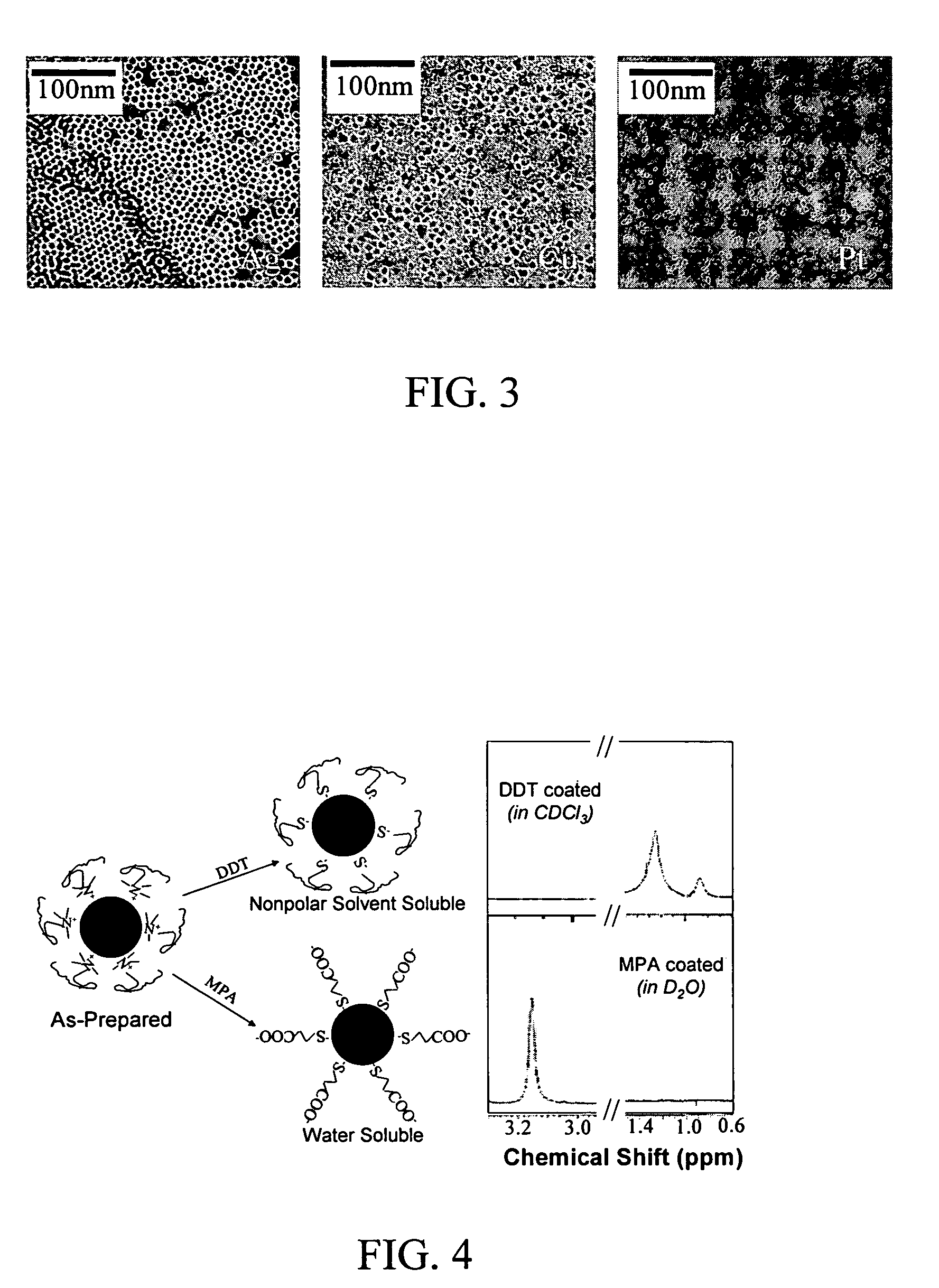Monodisperse noble metal nanocrystals
- Summary
- Abstract
- Description
- Claims
- Application Information
AI Technical Summary
Benefits of technology
Problems solved by technology
Method used
Image
Examples
example 5
Size Controlled Preparation of 6–15 nm Gold Particles by Varying the Ratio of TBAB and Hydrazine
[0050]172 mg of decanoic acid was dissolved into 10 mL of toluene. Next, 3.2 microliter of anhydrous N2H4 was dissolved into decanoic acid solution by sonication. This solution was then mixed with varying volumes (0.3 mL, 0.25 mL and 0.2 mL) of the TBAB solution. (The dilute TBAB solution was prepared by dissolving 2.5 mg TBAB into 10 mL toluene.) Finally, 7.5 mg of AuCl3 dissolved in 0.5 mL DDAB solution was injected and a deep red color appeared within 2–3 minutes of mixing. The particle sizes depended on the amount of TBAB added. Thus, about 6 nm sizes were obtained using 0.3 mL of TBAB, about 9 nm for 0.25 mL of TBAB, and about 15 nm for 0.2 mL of TBAB were formed. For the 9 nm and 15 nm particles, the size distributions were narrowed by boiling the particle dispersion in toluene (maintained at about 120° C.) for 30 min after dodecanethiol coating. Representative TEMs of particles pre...
example 6
Size Controlled Preparation of 6–15 nm Gold Particles by Seeding Growth:
[0053]The dodecylamine-stabilized particles (4 nm) were prepared as disclosed above and to this solution (about 3.5 mL), 25 mL of a precursor gold salt solution was mixed. The gold salt solution was prepared by dissolving 75 mg AuCl3, 500 mg DDAB, and 925 mg dodecylamine in 25 mL toluene by sonication until a clear yellow solution was obtained. Finally, 10 mL of N2H4 (0.2M) solution prepared in DDAB solution was added dropwise within a five-minute period during stirring. The solution color appeared deep red within 2–3 min. The 4 nm particles acted as seeds and grew into about 8 nm diameter particles without additional nucleation.
[0054]To prepare 15 nm gold particles, the as-prepared 8 nm gold particle solution was mixed with 50 mL of a precursor gold salt solution. This precursor gold salt solution was prepared by dissolving 750 mg of AuCl3 and 5 g of DDAB dodecylamine in 50 mL of toluene by sonication, until a ...
example 7
Preparation of 7 nm Silver Particles
[0055]A 172-mg sample of decanoic acid was dissolved in 10 mL of toluene. Next, 3.2 microliter of anhydrous N2H4 was dissolved into decanoic acid solution by sonication. This solution was then mixed with 0.1 mL of dilute TBAB solution. (The dilute TBAB solution was prepared by dissolving 2.5 mg TBAB into 10 mL toluene.) Finally, 17 mg of silver acetate dissolved in 0.2 mL of dodecylamine solution (1M) in toluene was injected during stirring. A dark red color appeared within 5 min of mixing, indicating particle formation. Stirring was continued for 10–15 minutes until the reaction was complete. The solution was stable for more than 24 h. Particle size distributions were narrowed by boiling the particle dispersion in toluene for 30 min after dodecanethiol coating. A representative TEM of the particles prepared is shown in FIG. 3.
PUM
| Property | Measurement | Unit |
|---|---|---|
| Particle size | aaaaa | aaaaa |
| Particle size | aaaaa | aaaaa |
| Nanoscale particle size | aaaaa | aaaaa |
Abstract
Description
Claims
Application Information
 Login to View More
Login to View More - R&D
- Intellectual Property
- Life Sciences
- Materials
- Tech Scout
- Unparalleled Data Quality
- Higher Quality Content
- 60% Fewer Hallucinations
Browse by: Latest US Patents, China's latest patents, Technical Efficacy Thesaurus, Application Domain, Technology Topic, Popular Technical Reports.
© 2025 PatSnap. All rights reserved.Legal|Privacy policy|Modern Slavery Act Transparency Statement|Sitemap|About US| Contact US: help@patsnap.com



